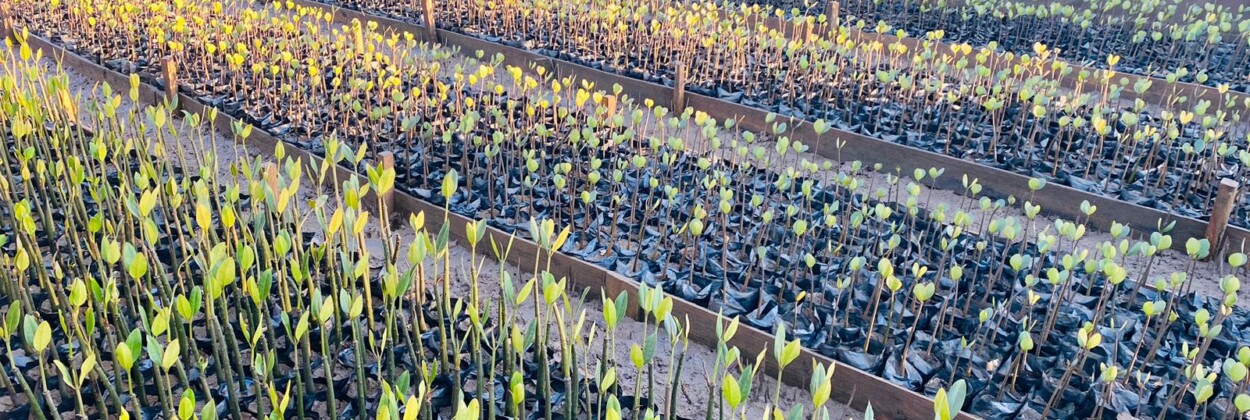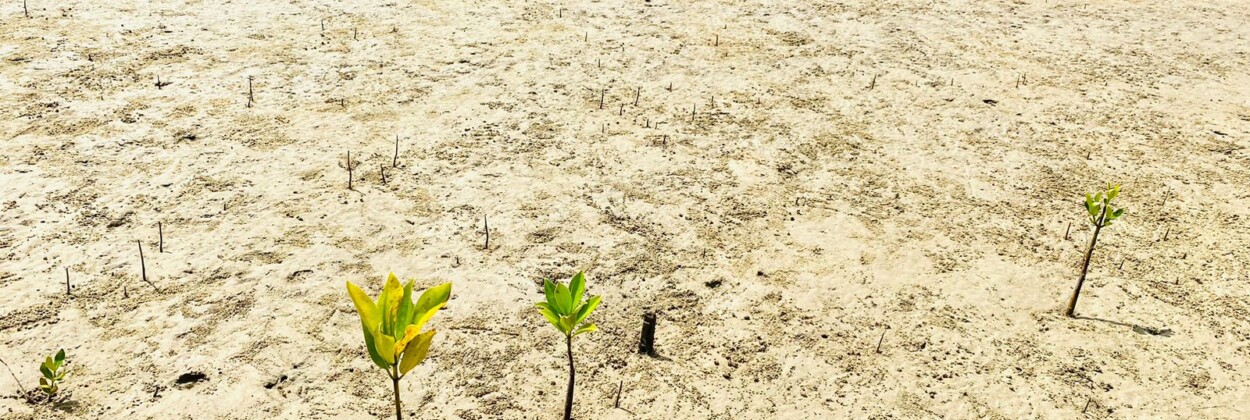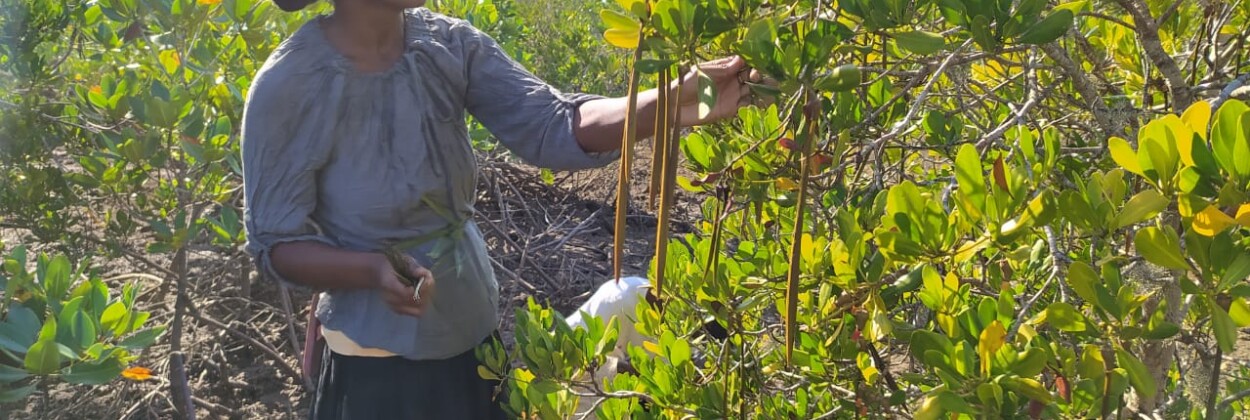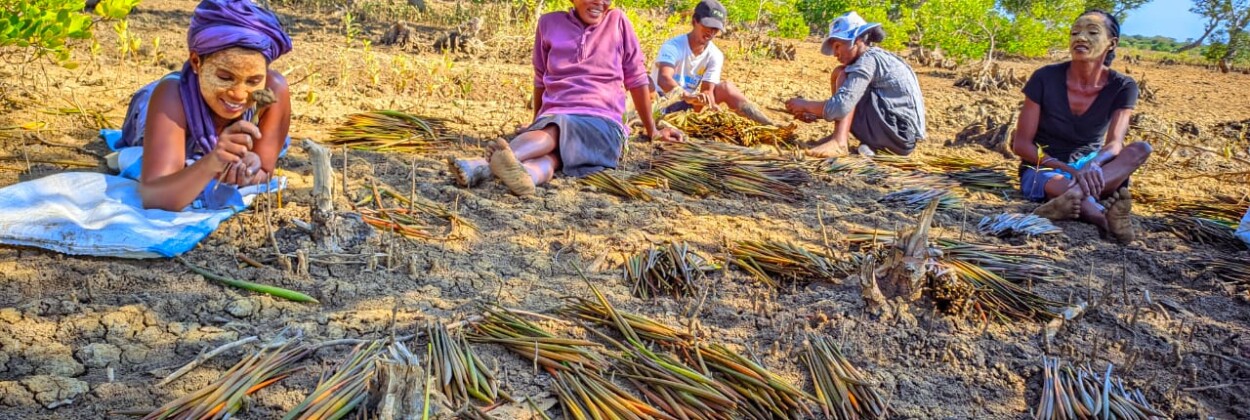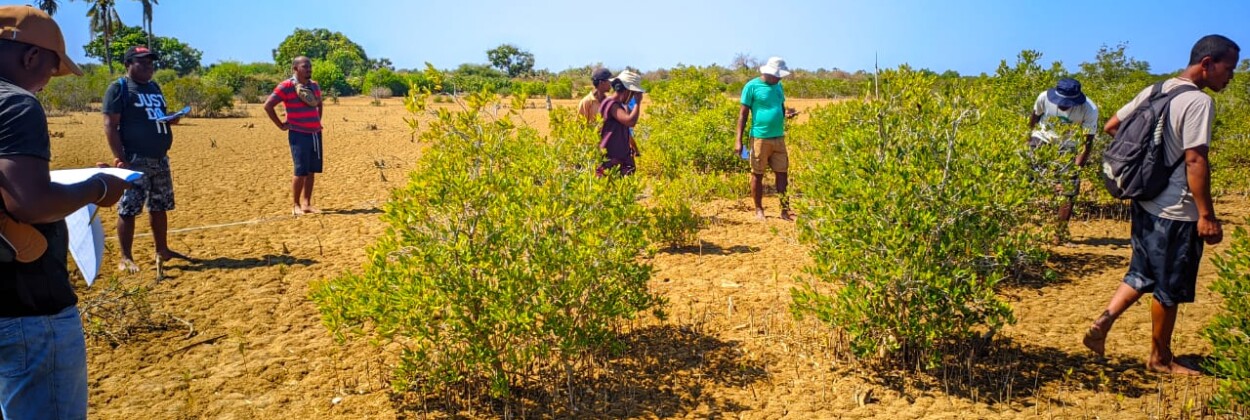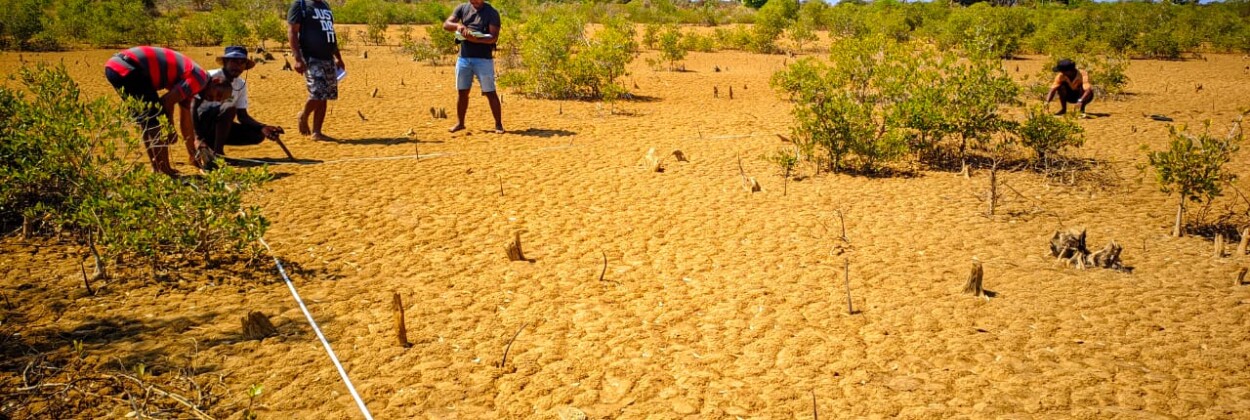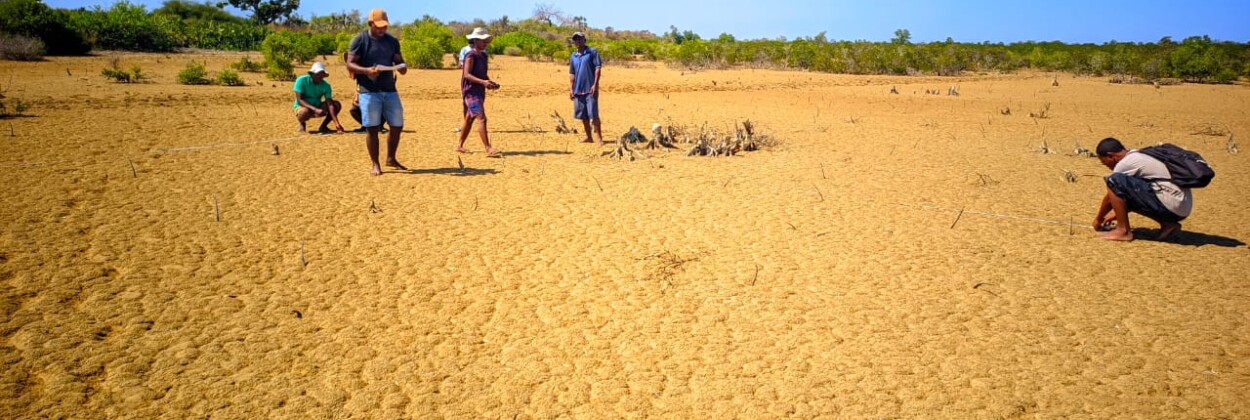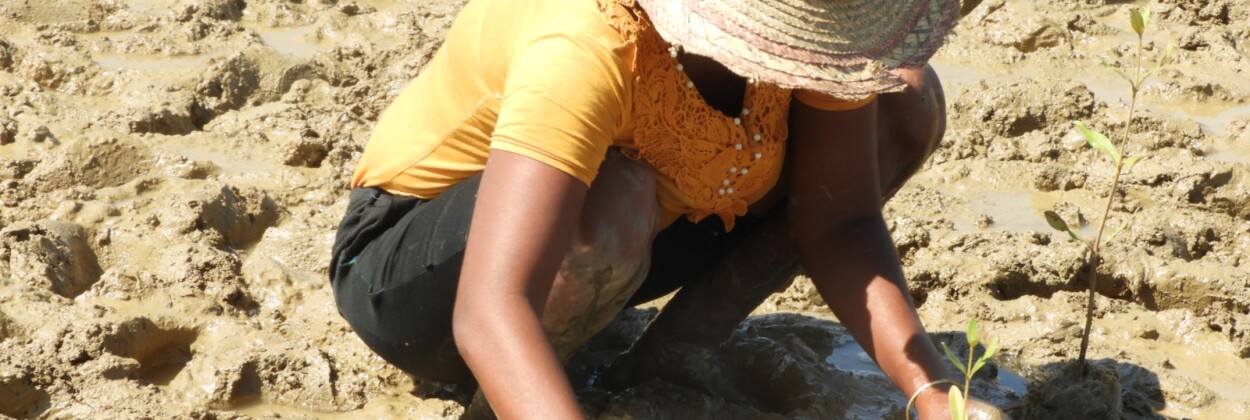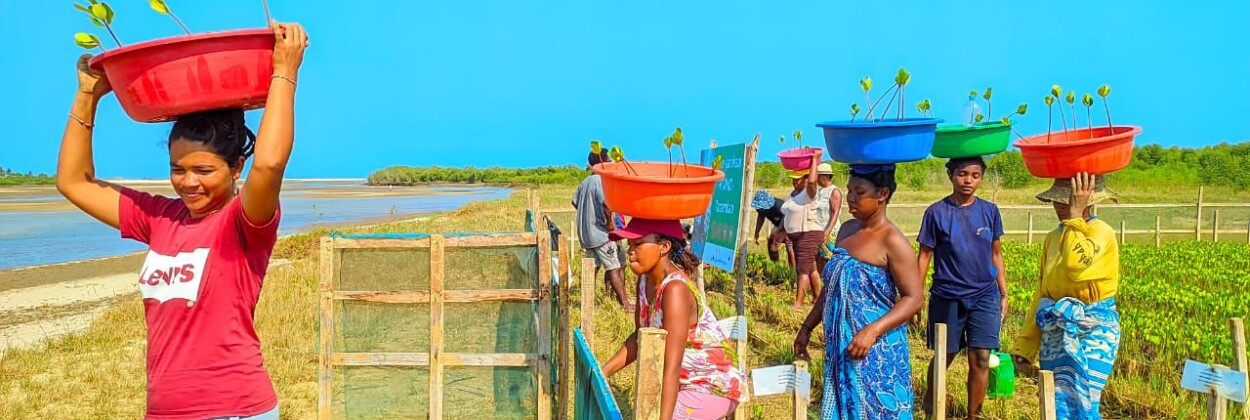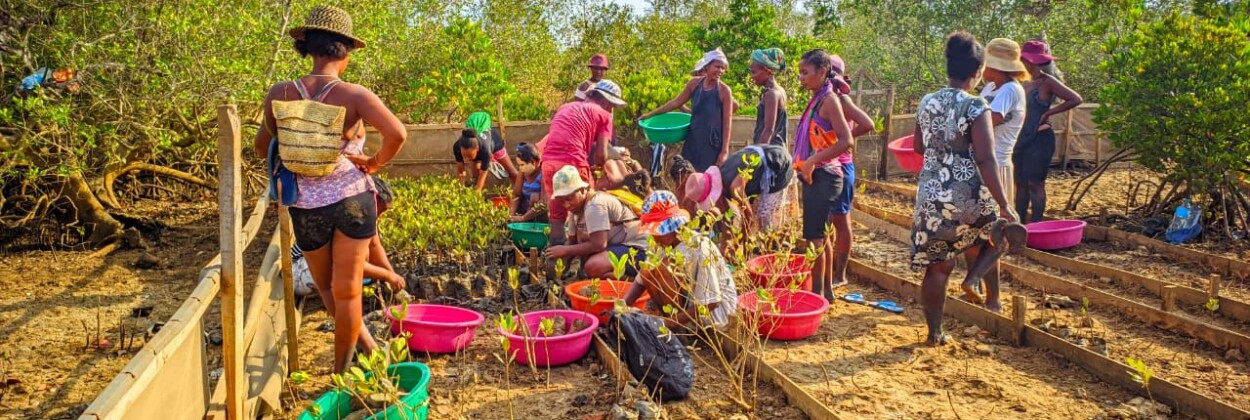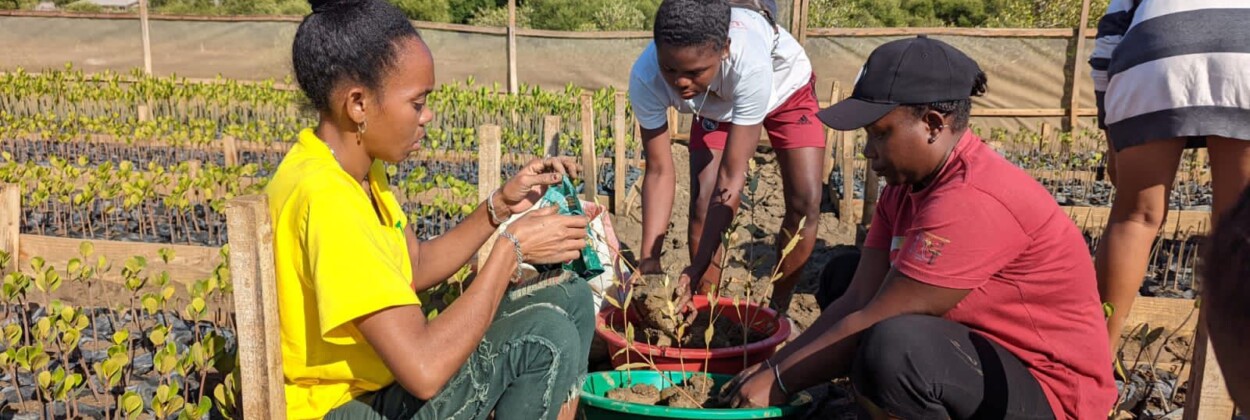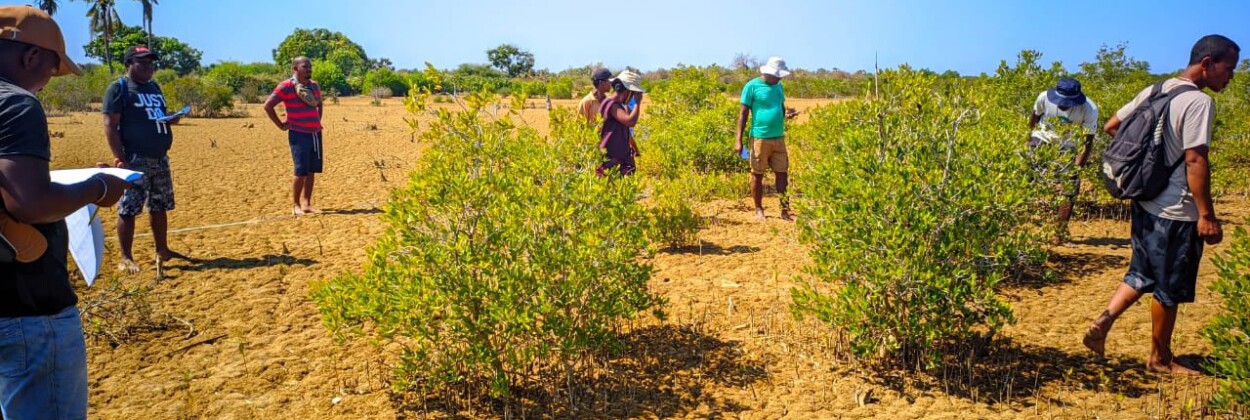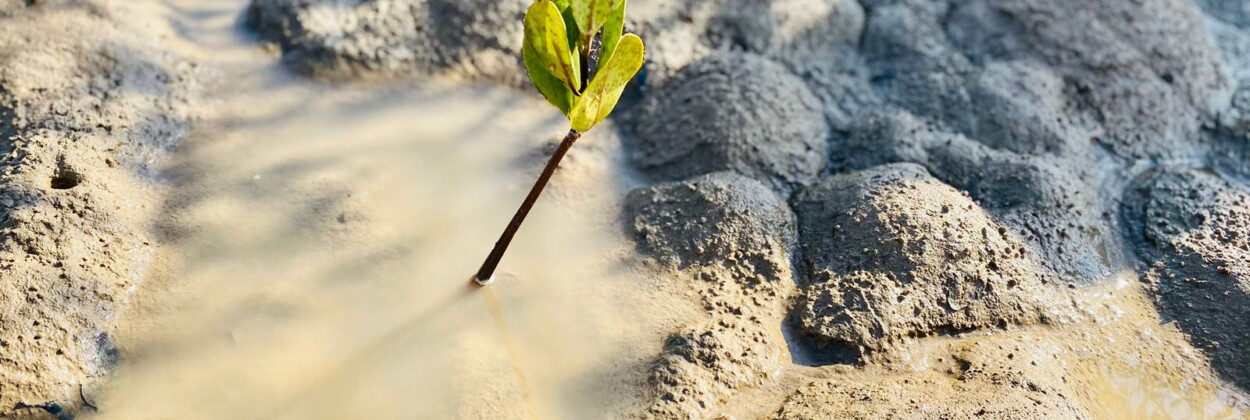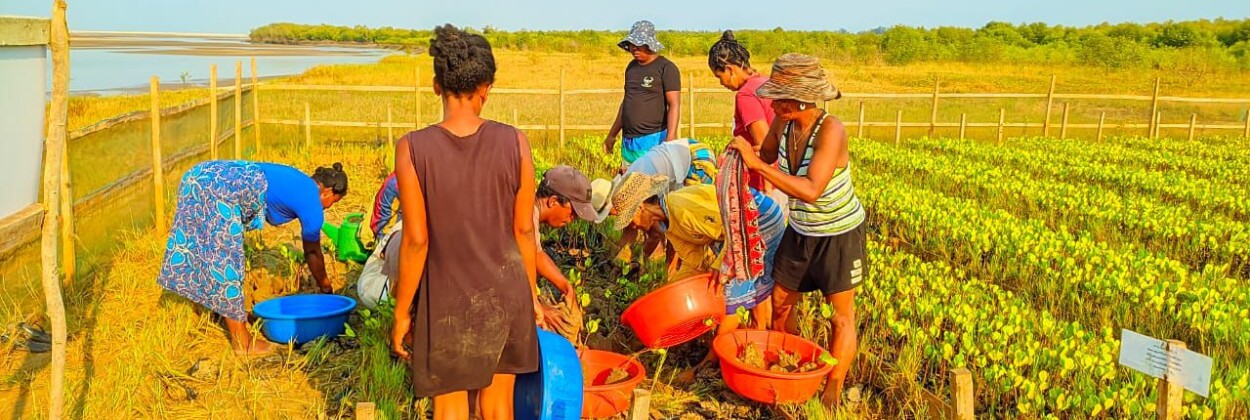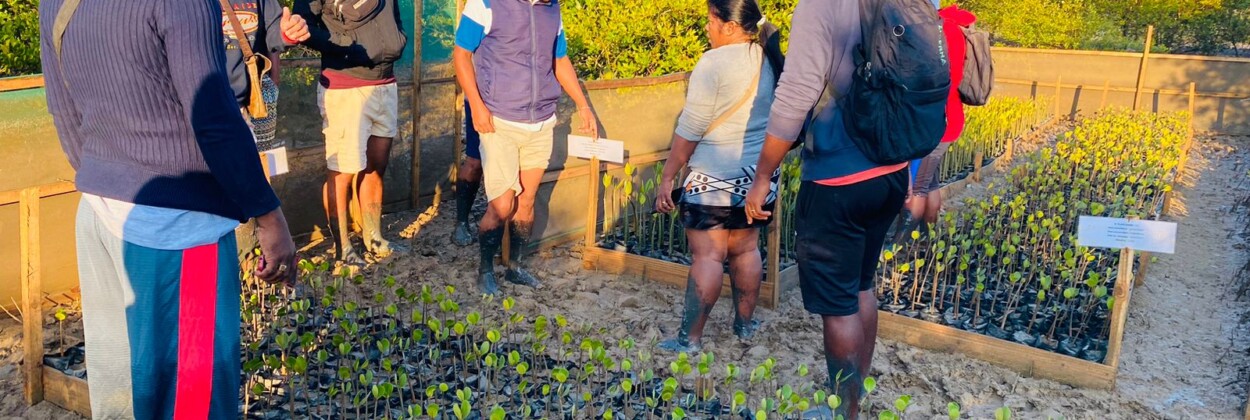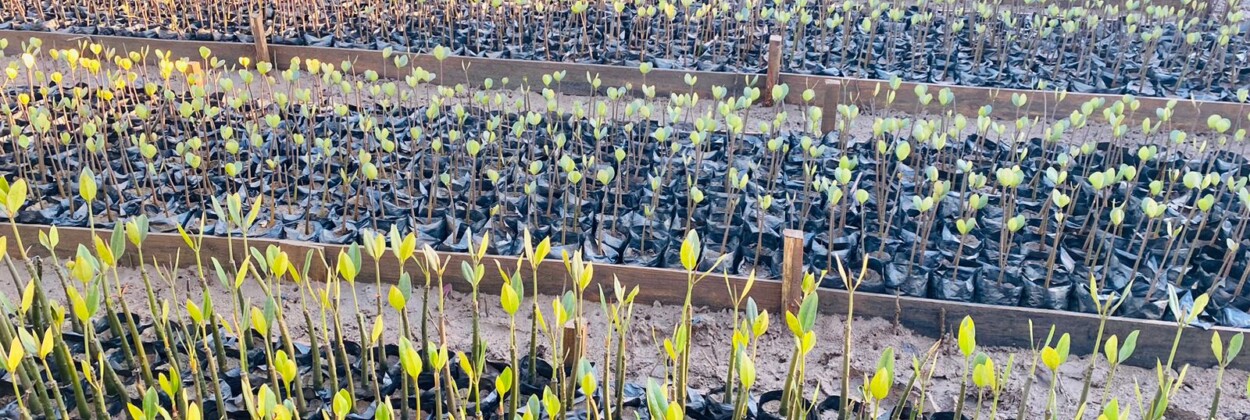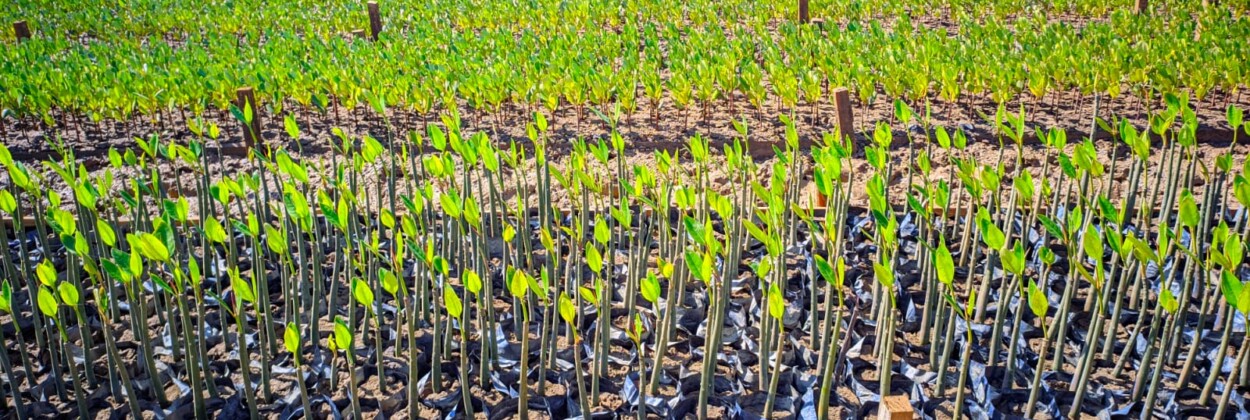Located in the southwest region of Madagascar, Morondava district sits on a very low, sandy maritime plain. The community relies on natural resources, such as agriculture and fishing, for both livelihood and income. The district is home to a rich yet fragile mosaic of ecosystems, including dry and thorn forests, savannahs, mangroves and coral reefs.
In response to the level of degradation of the area under study, the approach in this hub is the restoration of 100 hectares of mangroves. Due to coastal erosion, wide areas supposed to be mangroves are sand-covered, therefore preventing mangrove plants from properly prospering. Community members, mainly women, have to cross these sandy areas to reach mangroves, where they can harvest crabs and gastropods, essential for their livelihood.
In addition to the mangrove restoration intervention, local community members have also been trained on efficient mangrove planting, which will allow them to become resilient to the continuous erosion exacerbated by climate change.
Interventions to date:
- Identification of the area to be restored.
- Installation of the mangrove plant nursery.
- 192 jobs (days of labour work) created during the implementation of the nursery (71 people employed).
Expected benefits:
- 100 ha of mangrove restoration.
- 2,594 daily wage labor opportunities created during the whole implementation of the intervention.
- 4,625 direct beneficiaries (Antsira, Marofihitsa and Belo sur Mer neighbourhoods).
Hub coordinator and main implementer of interventions:
UNESCO & OXFAM South Africa
Morondava District Hub, Madagascar
Morondava, Madagascar
- Region: Madagascar
- Climate: Tropical wet and dry or savanna climate (Aw)
- Main meteorological hazards: Coastal erosion
- Nature-based solutions implemented: Mangrove restoration.
- Intervention: Restoration of 100 hectares of mangroves and training of local communities on efficient mangrove planting.
Morondava District Hub, Madagascar
- Region: Madagascar
- Climate: Tropical wet and dry or savanna climate (Aw)
- Main meteorological hazards: Coastal erosion
- Nature-based solutions implemented: Mangrove restoration.
- Intervention: Restoration of 100 hectares of mangroves and training of local communities on efficient mangrove planting.


